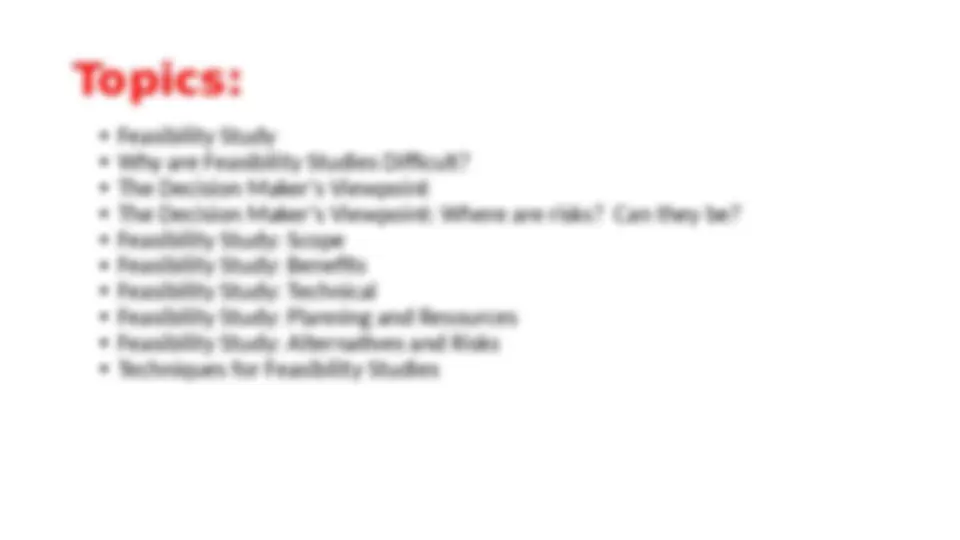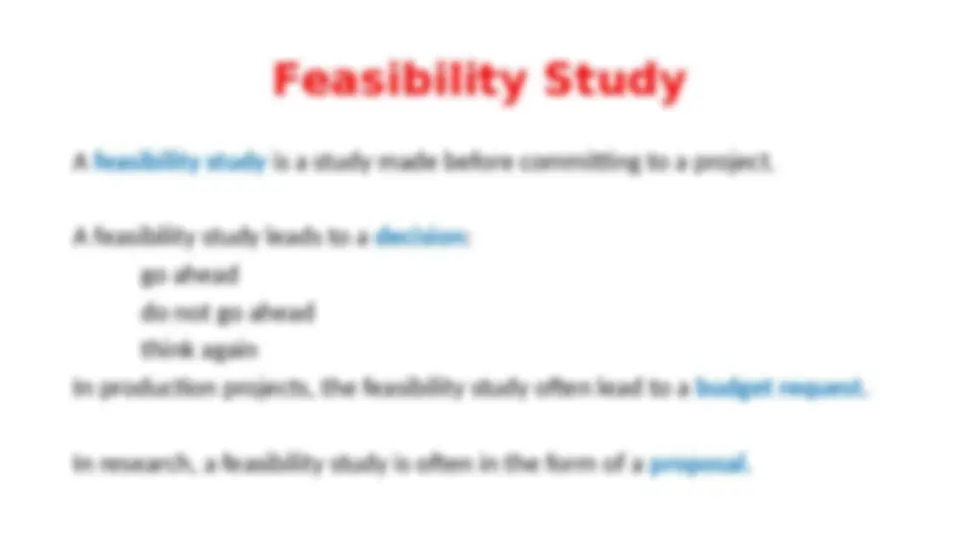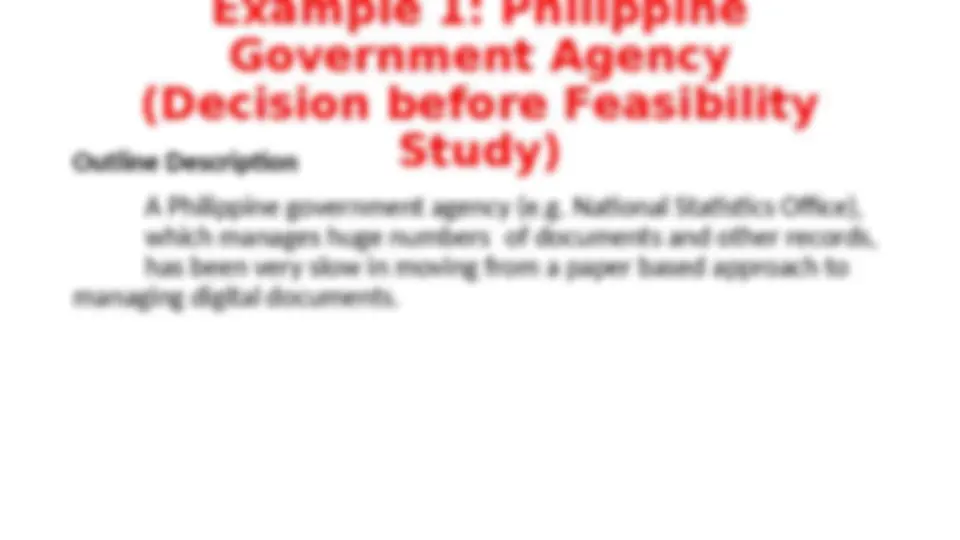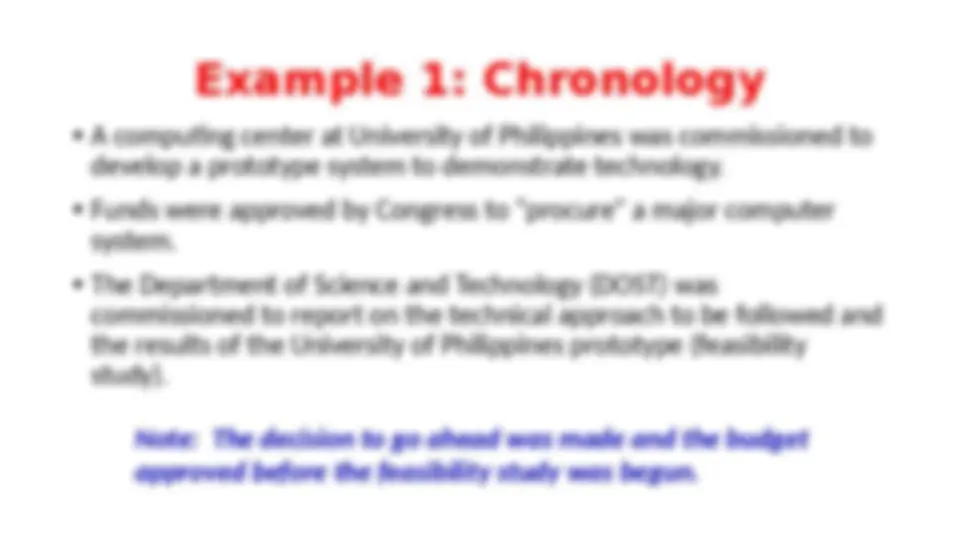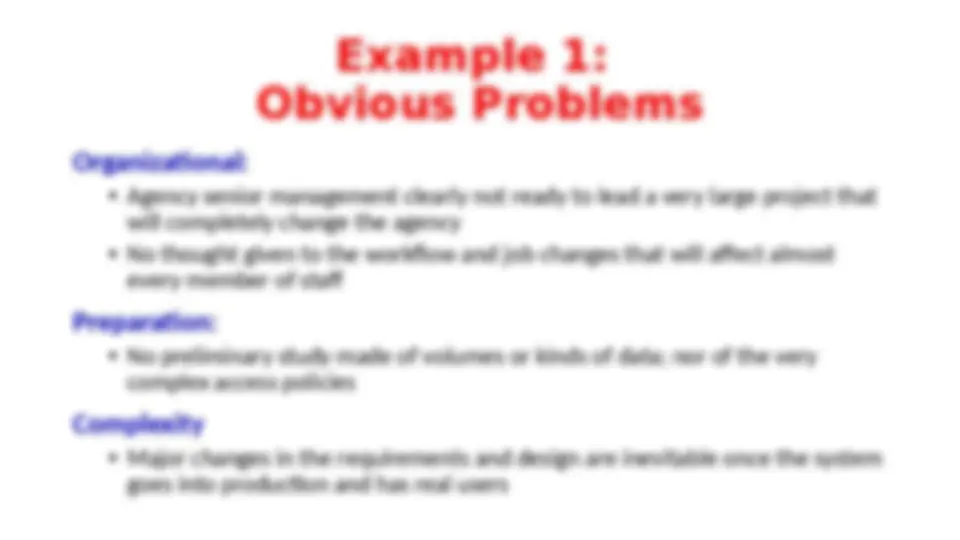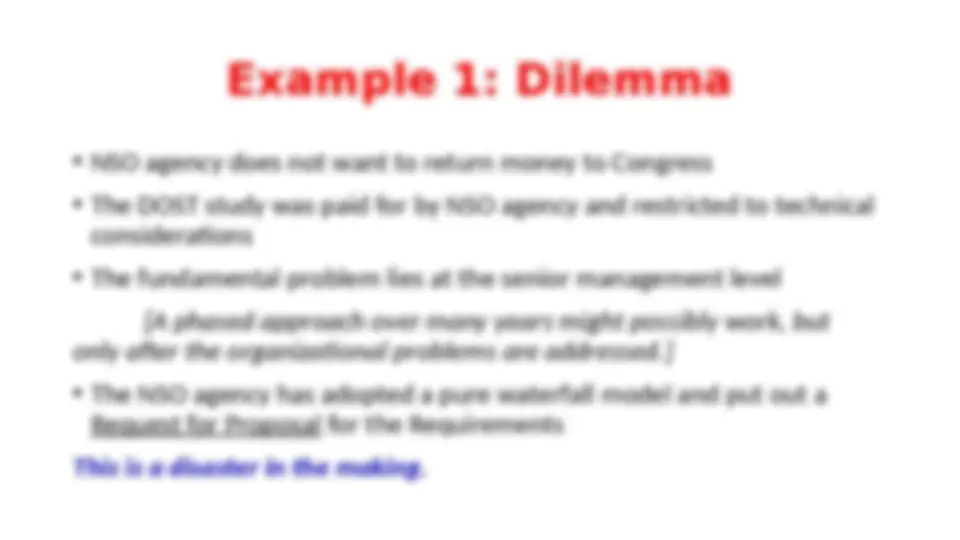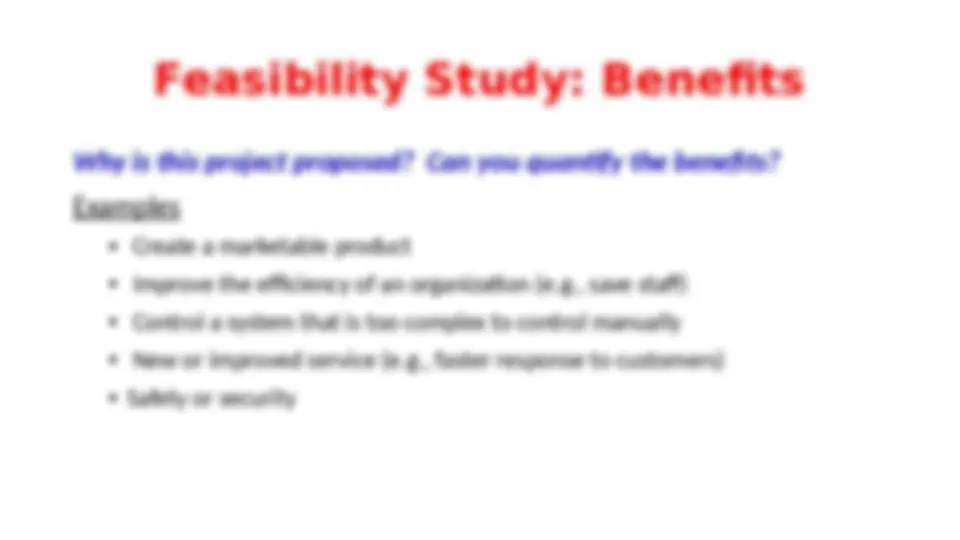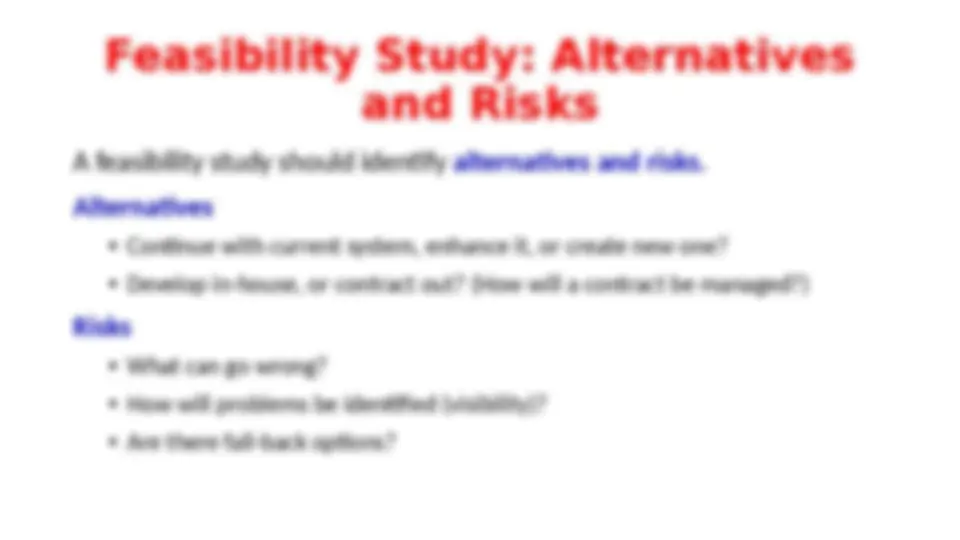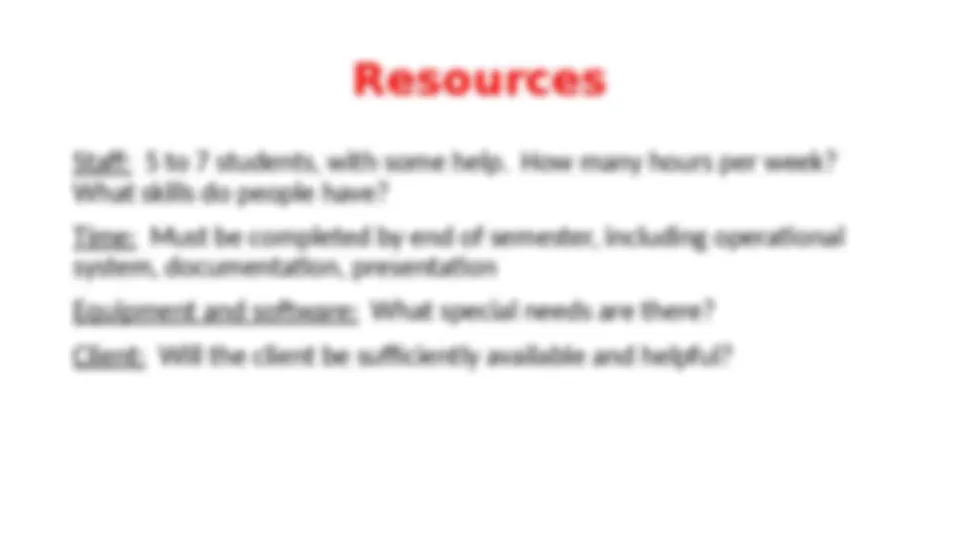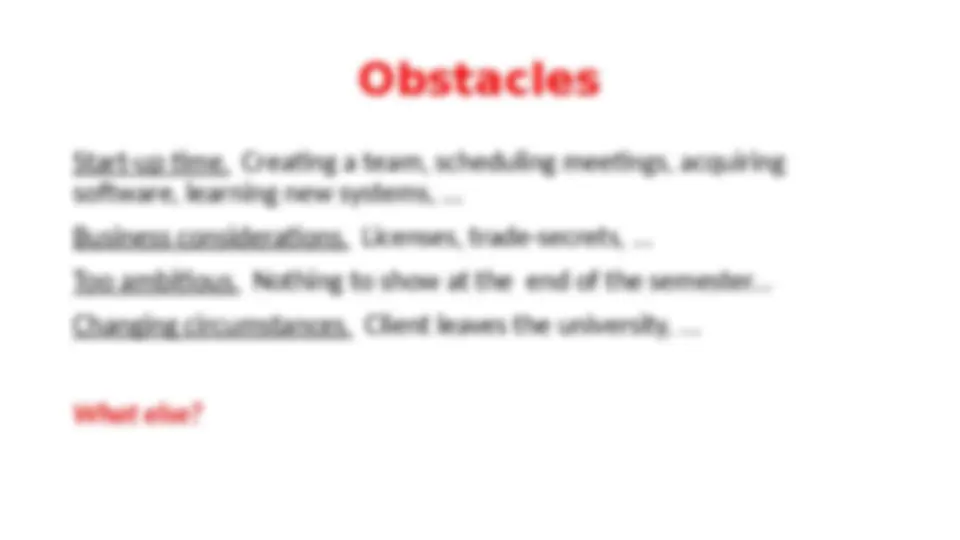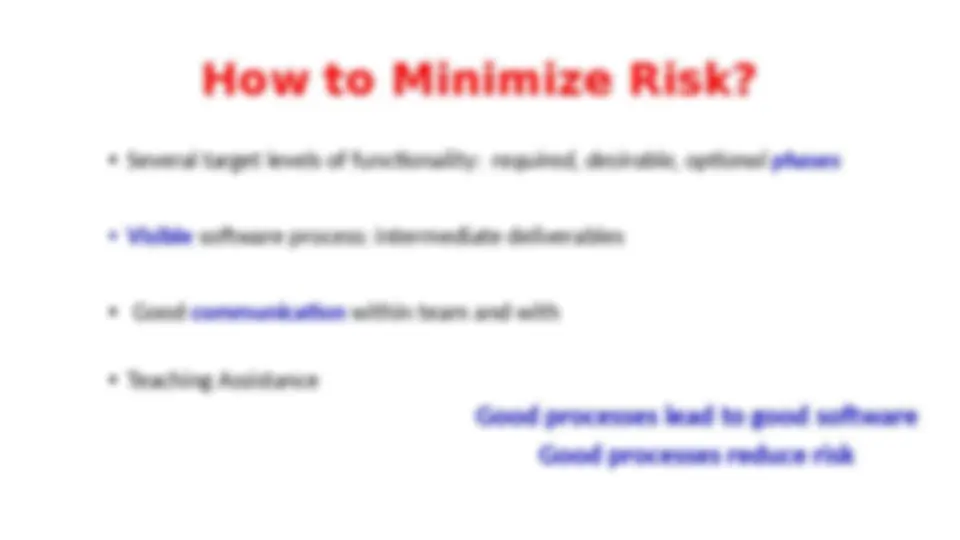Download Feasibility Studies in Software Engineering: A Comprehensive Guide and more Lecture notes Introduction to Software Engineering in PDF only on Docsity!
Module 3
Overview to Software
Engineering
Objectives of Module 3
- (^) Determine the importance of conducting Feasibility Study (FS)
- (^) Discuss the different phases/stages of writing FS
- (^) Examine a the workflow of a certain organization
- (^) Initially decide if the organization needs an innovative tool as part of their day- to-day work
- (^) Plan, design, and prepare a feasibility study for the organization
Learning Output
- (^) Feasibility study written
- (^) Feasibility study report submitted
REMINDER
Project teams:
If you have definitely chosen a project and reached agreement with
your prospect client/generic system, POST your group name with the
names of your team members in our Official FB Group.
If you do not have a team you can meet after class
Feasibility Study
A feasibility study is a study made before committing to a project.
A feasibility study leads to a decision :
go ahead
do not go ahead
think again
In production projects, the feasibility study often lead to a budget request.
In research, a feasibility study is often in the form of a proposal.
The Decision Maker's Viewpoint
A senior member of an organization must decide whether to begin a major
software project. What information is needed?
Client: Who is this project for?
Scope: What are the boundaries of the project?
Benefits: What are the benefits? Can they be quantified?
Technical: Is there at least one technical way to carry out the project?
Resources: What are the estimates of staff, time, equipment, etc.?
Alternatives: What are the options if the project is not begun?
The Decision Maker's Viewpoint Where are risks? Can they be minimized?
Technical
- (^) There must be an outline plan with a rough timetable and staff allocation.
- (^) The plan must have a very large margin for contingencies. (Projects typically require twice the staff and/or time envisaged in the feasibility plan.)
External
- (^) Every system interacts with others. Are the others committed to the necessary efforts?
- (^) Where are the external pressures and obstacles?
Example 1: Chronology
- (^) A computing center at University of Philippines was commissioned to
develop a prototype system to demonstrate technology.
- (^) Funds were approved by Congress to "procure" a major computer
system.
- (^) The Department of Science and Technology (DOST) was
commissioned to report on the technical approach to be followed and
the results of the University of Philippines prototype (feasibility
study).
Note: The decision to go ahead was made and the budget
approved before the feasibility study was begun.
Example 1: DOST Report
The DOST study finds:
- (^) The computer system is technically feasible.
- (^) The University of Philippines prototype is promising but incomplete.
- (^) NSO agency needs stronger technical staff.
The study was not asked to comment on external factors, but
discovered major weaknesses in the NSO agency's management
structure and organizational skills.
Example 1: Prototype and Phased Development
Example 1: Obvious Problems
Organizational:
- (^) Agency senior management clearly not ready to lead a very large project that will completely change the agency
- (^) No thought given to the workflow and job changes that will affect almost every member of staff
Preparation:
- (^) No preliminary study made of volumes or kinds of data; nor of the very complex access policies
Complexity
- (^) Major changes in the requirements and design are inevitable once the system goes into production and has real users
Feasibility Study: Scope
Scope expresses the boundaries of the system :
- (^) It will include
- (^) It will exclude
- (^) It depends on
- (^) It replaces
Confusion over scope is a common reason for clients to be dissatisfied
with a system.
"Is that all you planned to do?" "But I assumed that you were
going to do xyz." "I can't use the system without abc."
Example 2: National Library Confusion over Scope
- (^) The National Library required a repository system to store and make
accessible very large amounts of highly varied material over long periods of
time.
- (^) An outside organization (ProgFIRM) built a repository system to store and
manipulate complex digital objects
- (^) Nobody built the sub-systems needed to organize, validate, and to load
material into the repository.
- (^) The National Library expected the repository system to include this sub-
system. ProgFIRM considered it external to the repository system
A good feasibility study would have seen this confusion.
Example 3: Benefits of the National Library Digital Library (NLDL)
Concept
Create a comprehensive digital library for all aspects of science
education, where science and education are both defined very
broadly.
The DOST studied potential benefits for five years before going
ahead.
It came to the conclusion that, even though the benefits could
not be quantified, the potential was sufficient to justify a
major program.
Example 3: NLDL Timetable YEAR ACTIVITY 2010 Vision articulated by Department of Science and Technology (DOST) 2011 DOST Research and Development Committee workshop 2012 National Library personnel and staff workshop 2013 NLDL solicitation 2014 Demonstration projects of the core system 2015 Core integration system funded
Note: 5 years from concept to decision to definitely go ahead.

